Examining Open Brain MRI: Technology and Implications
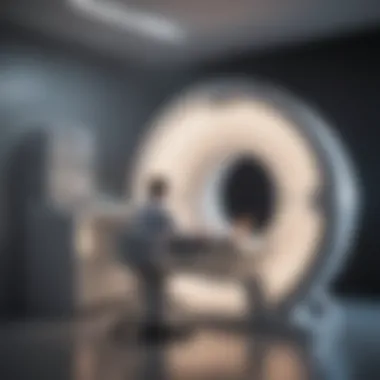
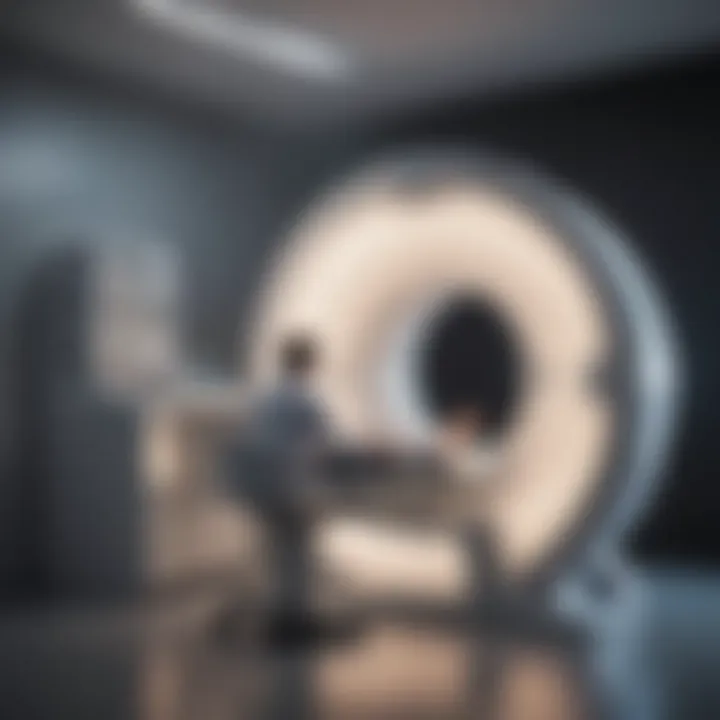
Intro
As science advances, humanity has come to fully realize the intricate workings of the brain. One vital tool in this journey is Magnetic Resonance Imaging (MRI), particularly its open variants. Unlike the traditional closed MRI machines which can trigger anxiety in many patients, open MRI machines offer a less claustrophobic experience. This shift promises not only to enhance patient comfort but also to bring insights previously shrouded in difficult imaging methods.
Open MRI systems serve a diverse range of patients—from those with mobility issues to children who might find a closed space overwhelming. This article intends to explore not just the operational differences between open and closed systems but also examine how these advancements influence diagnostic accuracy, patient experience, and broader clinical applications.
The exploration leads us to consider ongoing research and future implications of this technology within medical settings. An understanding of these developments is crucial for students, researchers, educators, and professionals who seek to engage with the evolving landscape of neuroimaging.
Prolusion to Brain MRI
The advent of brain MRI marked a revolutionary step in the field of neuroimaging. It transformed the way medical professionals visualize and diagnose brain-related issues. Understanding brain MRI is not just about knowing how it works but grasping its implications for patient care, diagnosis, and overall medical practice.
Definition and Purpose
Brain MRI, or magnetic resonance imaging, is a non-invasive imaging technique that uses powerful magnets and radio waves to create detailed images of the brain. It plays a pivotal role in detecting anomalies such as tumors, structural abnormalities, or any disease that might alter the brain's architecture. The beauty of MRI lies in its ability to provide high-resolution images without the use of ionizing radiation, making it a safer option compared to CT scans.
This technology serves multiple purposes:
- Diagnosis: MRI scans help in identifying conditions like multiple sclerosis, stroke, and traumatic brain injuries with remarkable accuracy.
- Assessment: It aids in monitoring brain diseases progression or regression over time.
- Research: Open brain MRI machines have opened new frontiers for research studies, giving insights into brain functions and psychosocial behaviors.
In this article, we will delve deeper into the specific mechanisms of open MRI machines and their distinctive benefits over traditional closed systems, especially in terms of patient comfort and diagnostic effectiveness.
History of MRI Technology
The history of MRI technology provides a fascinating glimpse into how far we've come. The first experimental machines came about in the early 1970s, driven by the groundwork laid in the field of nuclear magnetic resonance. In 1977, Dr. Raymond Damadian's pioneering work led to the first human brain MRI scan, establishing a new revolution in diagnostic imaging.
As the years rolled on, technological advancements shifted the focus toward more patient-friendly systems. Closed MRI devices became prevalent, yet they posed challenges for many patients. The claustrophobic feeling often associated with these machines led to a variety of comfort issues, highlighting the need for alternatives. Thus, the open MRI was developed, designed to alleviate anxiety by providing a less constraining environment while still maintaining high imaging quality.
Today, the evolution of this imaging technology continues with emerging innovations in open MRI systems that enhance patient accessibility and comfort, all the while not compromising the critical aspect of diagnostic precision. This historical context will provide insights into the future trajectory of brain MRI technology, which we will explore in the subsequent sections.
Understanding Open MRI Machines
Open MRI machines represent a shift in how medical imaging is approached, particularly for brain scans. They present unique benefits that address some of the common concerns associated with traditional closed MRI machines. This section examines the significance of understanding open MRI machines, focusing on their technical specifications, comparison with closed MRI, and highlighting areas of patient comfort and accessibility. The objective here is not only to explore the mechanics but to understand how these machines fit into the broader context of neuroimaging and patient care.
Technical Specifications
Open MRI machines are designed with a fundamentally different structure compared to closed MRI devices. Many of these machines have a wider diameter opening which allows for a more spacious environment. This configuration often includes a magnet that is less restrictive, producing a magnetic field that can be either horizontal or vertical depending on the model.
One notable feature is the lower magnetic field strength, generally around 1.0 Tesla or less, compared to closed systems that may reach up to 3.0 Tesla or more. This design choice directly impacts imaging details and quality; the lower field strength may result in less resolution for certain types of scans but enhances accessibility and comfort for the patient. Understanding these specifications provides insight into how open MRI technology caters to different populations while also delineating boundaries over its capabilities.
Comparison with Closed MRI
This part will delve into how open MRI machines stack up against their closed counterparts in three key areas: imaging capabilities, patient comfort, and accessibility.
Imaging Capabilities


When we talk about imaging capabilities, it’s like comparing apples to oranges. Closed MRI machines typically produce crisper images due to their higher field strength, making them suitable for more intricate diagnoses such as small lesions. However, open MRIs leverage their unique mechanism to serve a different purpose altogether.
With open machines, though the resolution might not match that of closed systems, they still provide adequate imaging quality for a significant number of diagnostic procedures, thus filling a niche for patients who would otherwise avoid traditional machines. This capability is beneficial for follow-ups or monitoring conditions where minute details are less critical.
Patient Comfort
Comfort comes to the forefront when we consider how different patients react to the examination experience. Open MRI machines are designed with patient psyche in mind, as they tend to minimize feelings of confinement. The broader opening can ease anxiety for patients suffering from claustrophobia, making the imaging process far less of a stressful endeavor.
Many open machines have the added benefit of allowing patients to have a companion present during the scan, contributing to a calmer environment. This unique feature is a significant trade-off that may lead to higher satisfaction with the imaging experience which is often overlooked in the pursuit of precise diagnostics.
Accessibility
When discussing accessibility, the conversation often shifts towards inclusivity, particularly for larger patients or those with mobility issues. Open MRI machines break physical barriers associated with traditional designs, making them a compelling option for obese patients or anyone who feels they might struggle within the tight confines of conventional MRIs. Accessibility isn't just about fitting within the machine; it’s also about reducing anxiety and improving the overall experience for a diverse population.
By providing a solution tailored to a broader demographic, open MRI technology illustrates a deep understanding of patient needs. Notably, its capacity to accommodate patients who might otherwise struggle with traditional machines reflects a significant advancement in how medical facilities approach imaging practices in modern healthcare.
In summary, understanding open MRI machines involves grasping their technical specifications while acknowledging their role in improving patient comfort and accessibility. The nuances of how these machines operate compared to conventional alternatives not only highlight their functionality but also underscore the evolution of medical imaging toward more patient-centered practices.
Advantages of Open MRI Machines
Open MRI machines offer distinct advantages that are reshaping the landscape of neuroimaging, primarily by focusing on patient-centric care and broader applicability of technology.
Enhanced Patient Experience
A significant edge of open MRI machines lies in their ability to cater to patient comfort. Traditional closed MRI machines can make patients feel like sardines in a tin can, leading to anxiety and discomfort—especially for those with claustrophobia. Open MRIs, by contrast, create a more liberated environment. The openness of these machines means patients won’t feel trapped; they can see their surroundings, which helps ease nervousness. It’s common for patients to express relief when they notice they aren’t enveloped by a metal tube. The spacious design can also accommodate patients who may struggle to fit into conventional machines.
From the perspective of healthcare providers, this enhancement in comfort translates to higher success rates for imaging procedures, reducing instances of repeat scans due to patient movement or anxiety. Open MRIs, therefore, play a pivotal role in providing a more relaxed atmosphere, directly impacting the quality of diagnostic results.
Broader Applicability
Open MRIs come with advantages that extend beyond just patient experience; they also cater to a wider array of patient populations.
Limitations of Open MRI Technology
While open MRI machines, by their design, cater to a broader patient demographic, they do have their drawbacks. Understanding these limitations is crucial, not just for medical professionals but also for patients considering this imaging technique. The focus on the limitations of open MRI technology reveals insights into how it compares to traditional closed systems and demonstrates the challenges ahead.
Image Quality Concerns
One of the most prominent limitations associated with open MRI machines is their ability to produce high-resolution images. Cleary, closed MRI systems benefit from a stronger magnetic field, generally yielding clearer, more detailed scans. In the case of open MRI, the trade-off for patient comfort often leads to compromised image quality.
- Resolution: The capability to discern subtle differences in tissues often suffers, which can be critical when diagnosing conditions like tumors or neurodegenerative diseases.
- Artifacts: Open machines might present more ghosting or motion artifacts, which can obscure important clinical information.
"While the relaxed environment of an open MRI can ease patient anxiety, it should not overshadow the importance of obtaining clear diagnostic images."
Magnetic Field Strength
The magnetic field strength of MRI machines plays a key role in their overall effectiveness. Most open MRI units operate at lower field strengths compared to their closed counterparts. Here’s why that’s a concern:
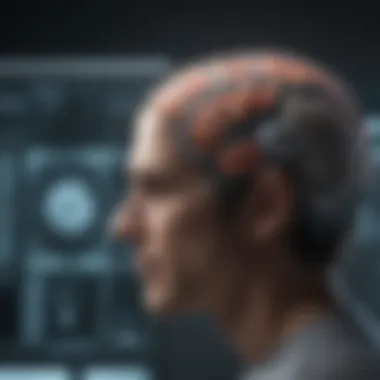
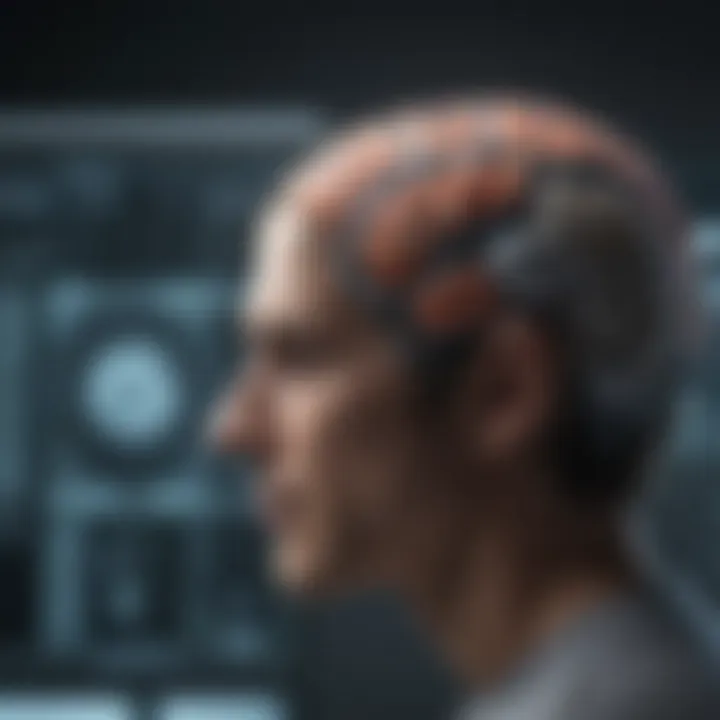
- Diagnostic Limitations: Lower magnetic field strength (typically 0.2 to 1.0 Tesla) can limit the diagnostic capability of the imaging. For example, a radiologist might struggle to clearly visualize certain brain structures or pathologies like microbleeds or lesions.
- Longer Scanning Times: Open MRIs often require longer scan times, increasing the possibility of motion during data acquisition, which can further reduce image quality and potentially necessitate repeat scans.
Cost Considerations
Cost is always an important factor in healthcare technology. Open MRI machines, while increasingly popular, can present unique financial challenges:
- Initial Investment: The purchase price and installation of an open MRI system can often be on par with closed systems, but the concerns around imaging modalities can affect their long-term utility.
- Operating Costs: Lower imaging quality can lead to additional follow-up imaging, thus increasing overall costs. Healthcare professionals must weigh these factors when deciding on the implementation of open MRI technology in practice.
In summary, while open MRI machines do provide a patient-friendly alternative to traditional systems, their limitations in image quality, magnetic field strength, and cost implications deserve thorough consideration. Moving forward, ongoing advancements in this technology are needed to bridge the gap in imaging capabilities while still prioritizing patient comfort.
Clinical Applications of Open Brain MRI
The use of open MRI technology in clinical settings marks a significant step forward in neuroimaging. It allows for an improved patient experience while maintaining the diagnostic capabilities necessary for effective medical evaluations. With wide accessibility and adaptability, open brain MRI machines serve diverse populations, including those with disabilities, children, or individuals who may have previously found traditional MRI procedures daunting. The flexible design of open MRI machines reduces claustrophobia, making imaging less intimidating which bolsters patient comfort and cooperation during scans.
Diagnostic Uses
Open brain MRI plays a crucial role in diagnosing various neurological conditions. These include strokes, tumors, and degenerative diseases such as multiple sclerosis. By providing high-resolution images, open MRI machines contribute to improved diagnostic accuracy. For instance, clinicians can observe brain structures with more detail compared to conventional methods. This clarity not only aids in identifying existing conditions but also in monitoring changes over time, leading to more personalized treatment plans.
Factors such as patient history, symptoms, and preliminary findings all influence the decision to use open MRI technology. Not only does it facilitate easy access for patients who feel more comfortable in an open environment, but it also allows for quicker scans due to less time spent preparing anxious patients. This ultimately leads to faster diagnosis and treatment initiation, critical elements in managing acute neurological conditions.
Research Applications
Research applications of open brain MRI extend beyond diagnostics. Here, researchers tackle not just the mysteries of the brain, but also the potential therapeutic avenues. These applications consist of Ongoing Clinical Trials and Investigations in Neuroscience, both of which contribute robust data to the growing field of neuroimaging.
Ongoing Clinical Trials
Ongoing Clinical Trials using open MRI technology focus on its improved imaging capabilities and patient outcomes. These trials often investigate newer modalities alongside emerging treatment techniques. One notable characteristic of these trials is their patient-centric approach, emphasizing comfort during scans. This has made open MRI machines a popular choice, as studies can gather data effectively from a broader range of participants.
Furthermore, a unique feature involves testing responses to various treatments while using open MRIs, allowing for real-time imaging to track changes in the brain structure or function. Patient diversity in these studies presents advantages in terms of applicability across different demographic groups, although disadvantages might include potential variability in the quality of images based on field strength and equipment parameters.
Investigations in Neuroscience
Investigations in Neuroscience are significantly enhanced via open MRI technology, addressing questions fundamental to understanding brain function. These studies can explore everything from memory processing to emotional regulation, contributing valuable insights into conditions such as ADHD or anxiety disorders. One of the key characteristics of these investigations is their ability to appeal to a wider participant base.
The opportunity for researchers to conduct studies with participants who would otherwise be deterred by the claustrophobic nature of traditional MRIs is a vital part of expanding the scope of neuroscience research. The possibility of conducting longitudinal studies using open MRIs allows researchers to observe the same subjects over time, helping to capture changes that might occur in response to treatment or developmental factors. However, one must consider that while open MRI technology offers significant benefits, it may sometimes compromise the depth of imaging that can be achieved with closed MRI systems.
Patient Safety and Comfort
When it comes to medical procedures, particularly imaging like MRI, patient safety and comfort stand at the forefront. Open MRI machines, in contrast to their closed counterparts, have been designed with numerous factors in mind that prioritize the well-being and ease of patients. The essence of this innovation lies in acknowledging that a calm patient is more likely to provide accurate diagnostic results. Therefore, understanding the mechanisms of how these machines enhance safety and comfort becomes crucial for both patients and practitioners.
Reduction of Claustrophobia
Claustrophobia can be a significant barrier for many individuals undergoing traditional MRI scans. The confined space of closed MRI machines may induce anxiety, resulting in poor cooperation during scanning. Open MRI machines tackle this head-on by providing a more spacious environment, effectively reducing the sensation of entrapment. Patients are often able to see the surrounding area while being scanned, allowing for a sense of control and openness. This configuration can translate into more successful imaging sessions, as less anxiety often leads to less movement, which in turn improves the quality of the images captured.
"In many cases, the very layout of the open design alleviates fears, transforming a potentially distressing experience into a manageable one."
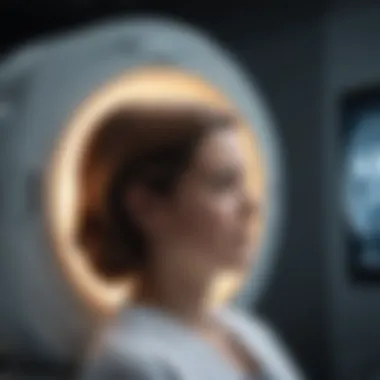
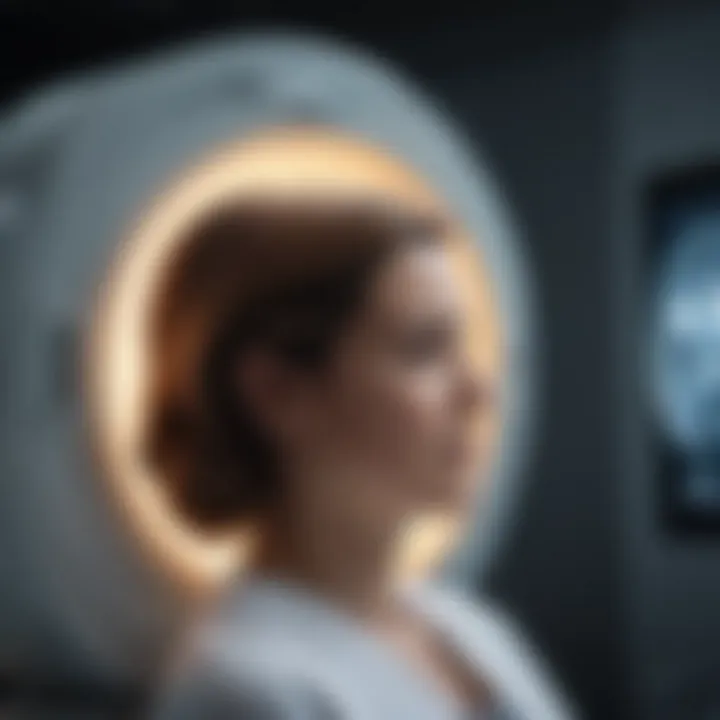
The comfort of the patient doesn't just stop at spatial awareness. The equipment itself is typically more adjustable and accommodating, which caters to those who might feel constricted by the rigid frames of closed MRIs. Being snug without being trapped plays a key role in overall patient satisfaction and helps foster a positive relationship with medical imaging.
Emergency Procedures
Safety protocols during emergency situations are another consideration that elevates the appeal of open MRI machines. In urgent cases where immediate action is required, the structure of an open MRI allows for quicker patient extraction. The easy accessibility simplifies the logistics of medical interventions, whether it’s for patients with complications arising during an exam or those requiring rapid transfer to other medical facilities.
In comparison to closed systems where patients might need to navigate the tight confines, the open architecture enables medical personnel to respond more swiftly and efficiently. This can be particularly crucial in scenarios involving children or individuals with conditions that necessitate constant observation.
While the technology continues to advance, the principles of patient-centric design remain paramount. Innovations that prioritize safety without sacrificing comfort lead to an enhanced patient experience, a factor that should not be underestimated in clinical settings.
Future Directions in Open MRI Technology
The future of open MRI technology holds significant promise and importance for both clinical applications and patient care. As we witness rapid advancements in imaging technology, it's essential to stay abreast of the developments in open MRI systems. These machines are already demonstrating a distinct ability to enhance patient comfort and expand their usability across various demographics, but there’s still much more that can emerge from this field.
One of the critical areas of focus will be improving the image quality of open MRIs. Researchers are actively working on increasing the resolution and clarity of images produced by these machines. This enhancement is crucial, particularly for diagnostic purposes, where the accuracy of the image can directly affect treatment decisions. The integration of advanced algorithms and artificial intelligence could pave the way for more sophisticated imaging techniques, guiding radiologists in interpreting results with greater precision.
"With technological evolution in image processing, open MRI machines could soon stand shoulder to shoulder with their closed counterparts in terms of image clarity and diagnostic capability."
Looking ahead, the use of higher magnetic field strengths in open MRI systems is on the horizon. Traditional models were constrained by lower field strengths, which limited their effectiveness for certain conditions. Emerging designs propose new ways to balance accessibility with the need for stronger magnetic fields, thus broadening the clinical applications that can be addressed using these machines. This is a vital step for conditions requiring detailed imaging, such as tumors or complex neurological disorders.
Additionally, the user experience is expected to take center stage. Future open MRI machines may incorporate customizable environments which could use aspects like adjustable lighting, calming soundscapes, and even virtual reality features to foster a more relaxing atmosphere during imaging sessions. Encouraging patient participation in their own care through personalized experiences can't be undervalued—it plays a significant role in alleviating anxiety and improving cooperation during procedures.
Technological Advancements
The technological trajectory of open MRI machines presents exciting prospects. Significant advancements are already in progress and are anticipated in areas such as:
- High-Resolution Imaging: Continued enhancements in magnet technology can enable higher image resolution without sacrificing the open design. This means that even with the absence of the traditional closed tube, clinicians can achieve the necessary detail for accurate diagnoses.
- Integration of AI: It’s not just about collecting data anymore; AI is being enlisted to analyze imaging in real-time, identifying patterns and even potential concerns autonomously. This change can lead to more rapid diagnosis and treatment decisions.
- Portable Systems: The push towards portable open MRI solutions could change everything. Taking the imaging equipment directly to patients, especially in non-hospital environments, might fundamentally alter how we approach diagnostics, particularly in underserved areas.
Market Trends
The market for open MRI technology is witnessing a gradual but notable shift, characterized by several key trends:
- Increasing Demand for Patient-Centric Solutions: Patients are more involved in their healthcare decisions today. Their preference leans towards technologies that prioritize comfort and reduce anxiety. Open MRI machines fit perfectly into this narrative.
- Investments in Research and Development: With manufacturers and hospitals recognizing the potential of open MRI systems, significant investments are being made in research and development to enhance both the machines and their applications. Companies are keen to innovate not just in the hardware but also in complementary software solutions that enhance the overall imaging process.
- Growth in Global Markets: As hospitals continue to modernize and meet diverse patient needs, the global market for open MRI machines is expanding. Emerging economies are particularly looking at these technologies to improve their medical imaging capabilities, driving trends in accessibility and quality of care.
In summary, the ongoing evolution of open MRI technology carries vital implications not just for diagnostics but for the entire healthcare landscape. Understanding these future directions is essential, as they influence how clinicians can better serve patients while simultaneously advancing the medical field.
Culmination
The conclusion serves as a pivotal element in this article, synthesizing the various dimensions of open brain MRI technology discussed throughout. By encapsulating the key points, it provides a summary that not only anchors the reader’s understanding but also reinforces the significance the technology holds in the medical field.
Summary of Key Points
In summary, the exploration of open brain MRI machines has brought to light several critical aspects:
- Enhanced Patient Comfort: Unlike traditional closed machines, open MRIs cater to individuals who might experience anxiety or claustrophobia, thereby improving the overall experience.
- Versatile Applications: The ability to accommodate larger patients and children makes open MRIs a favored choice across diverse demographic groups.
- Technical Limitations: While the accessibility and comfort provided by open MRIs are commendable, there are undeniable challenges relating to imaging quality and magnetic field strength that need to be addressed.
- Ongoing Research: Continuous advancements in technology signal a promising future, with research efforts dedicated to overcoming existing limitations and enhancing diagnostic utilities.
The interplay of these elements signifies that open MRI machines do not merely serve as alternatives to traditional systems; they represent a significant shift in how imaging technology can be more inclusive and patient-oriented.
Implications for Future Research
Looking ahead, the implications for future research in the realm of open MRI technology are both vast and intricate. Here are some potential avenues:
- Improvement of Imaging Quality: Researchers might focus on developing new techniques or technology that can enhance image resolution in open MRIs, making them more competitive with their closed counterparts.
- Clinical Outcomes: Longitudinal studies could shed light on the impact of patient experience on diagnostic accuracy and clinical decisions, building a more robust understanding of how comfort influences outcomes.
- Cost-Effectiveness Analysis: As healthcare shifts toward value-based care, understanding the cost-effectiveness of open versus closed MRI systems will be essential for informed decision-making.
- Personalization of Care: Future studies may explore how open MRIs can be integrated into personalized care models, for instance by embedding them into outpatient settings where patient comfort is paramount.







